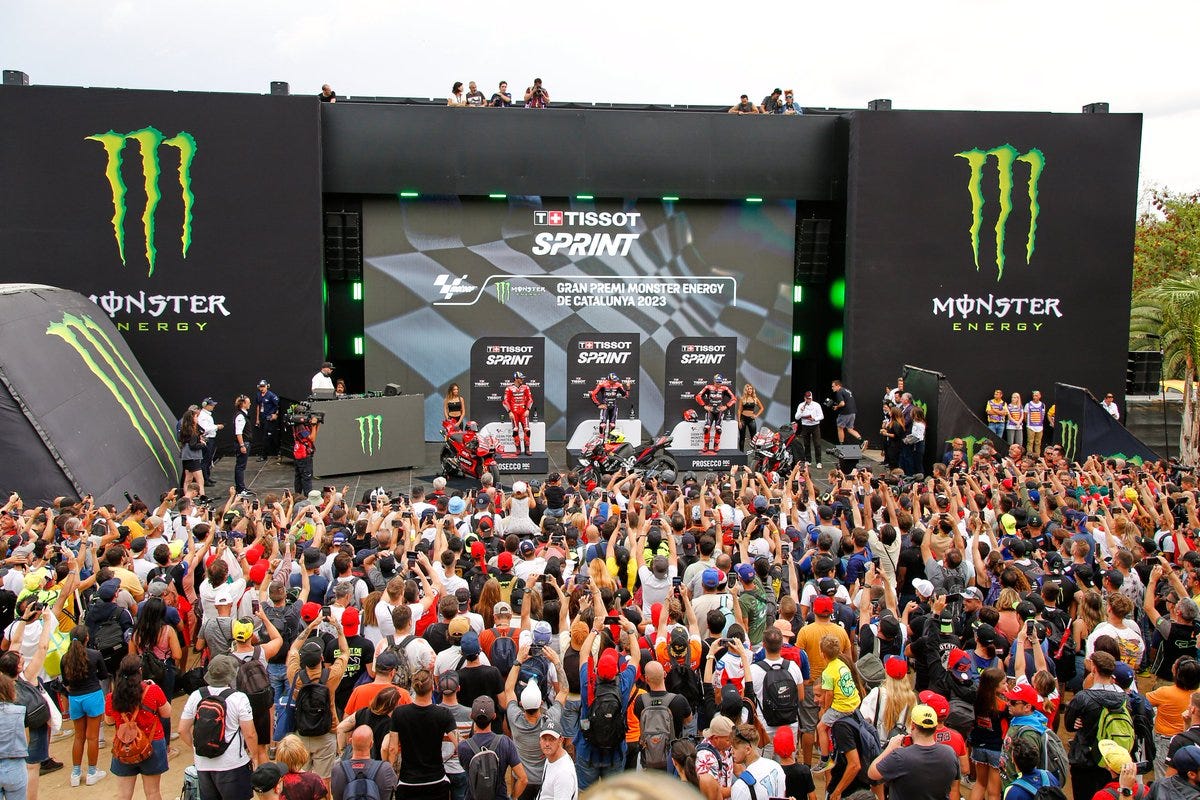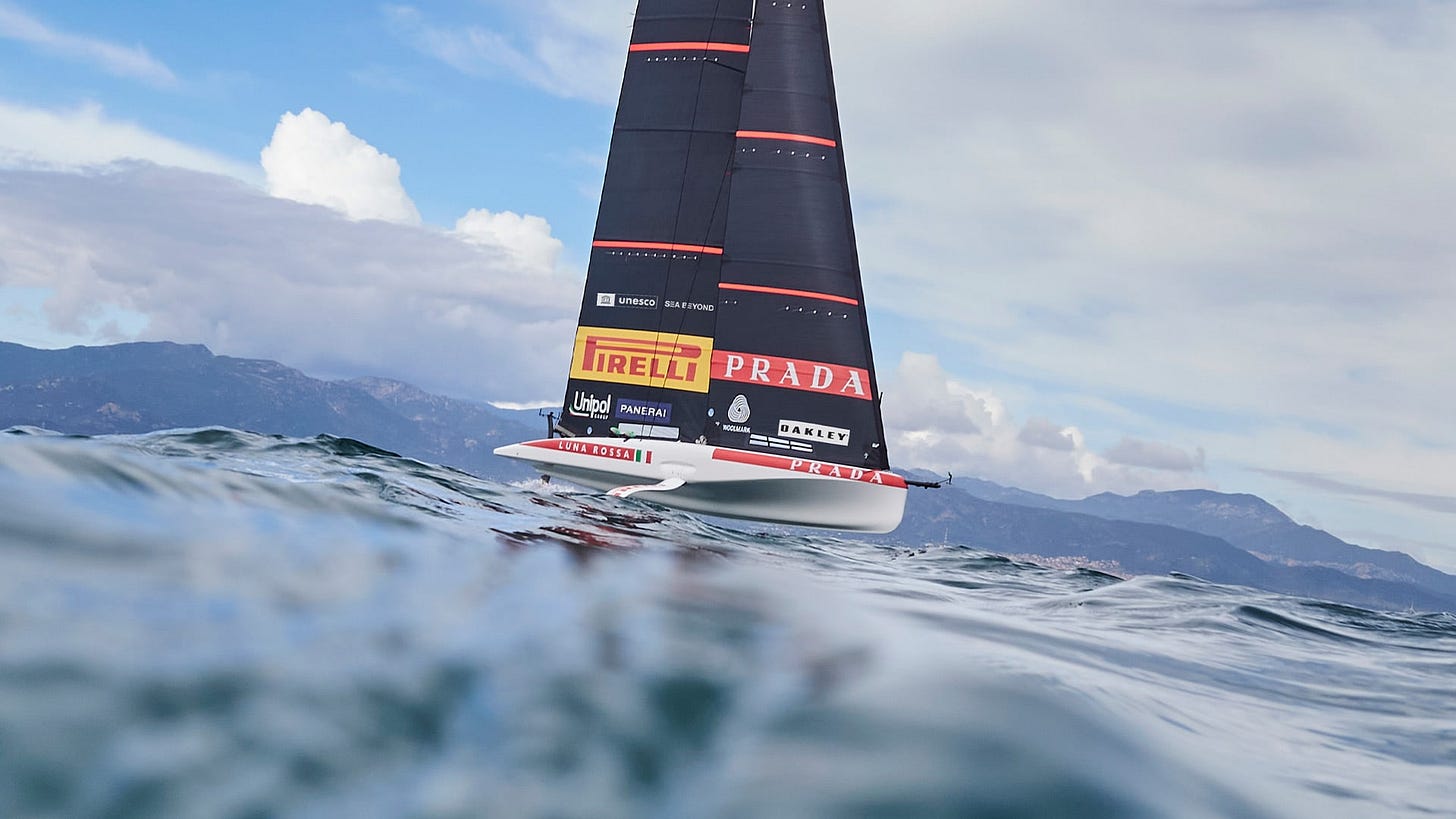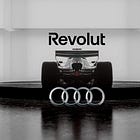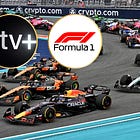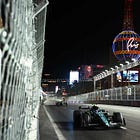How Brands Win the Attention War
It's time to stop thinking like a sponsor and start thinking like a showrunner.
You are receiving this email because you subscribed to Business of Speed, the newsletter for those wanting to stay ahead on what’s happening in the business and tech of automotive and racing.
Racing series like Formula 1, MotoGP, and America’s Cup don't just showcase the fastest machines on the planet. They're proving grounds where teams, drivers, sailors, and team members can either disappear into the noise or become cultural phenomena.
Brands competing for attention in these arenas face a similar challenge: how to stand out in a sea of logos, sponsorships, and noise. The answer?
Extreme creativity.
Marketing “Impossible”
In Formula 1, Red Bull has long been the benchmark for daring brand activations. Their “Race the Tube” stunt in London and the record-breaking skydive from the edge of space weren’t campaigns to sell energy drinks; they became cultural moments that tied adrenaline to brand identity. By stretching beyond trackside signage, Red Bull made itself impossible to ignore.
When Red Bull sent Felix Baumgartner (RIP 😞) to the edge of space in 2012, they were selling the impossible. The Stratos jump broke world records, the sound barrier, and every rule about how brands should behave. Over 8 million people watched live on YouTube—a streaming record that stood for years.
But that's just Tuesday for Red Bull.
The genius is in how Red Bull makes their brand the star of human achievement. When Max Verstappen wins races, he's not just driving for Red Bull Racing, he's embodying a brand philosophy that says ordinary limits don't apply.
Paddocks into Playgrounds
While Red Bull owns the sky, Monster Energy has colonized the ground with fan experiences that make trackside look like a festival. At MotoGP events, their activations read like a music festival lineup: FMX shows, rider meet-and-greets, giant screens, and their own dedicated podium ceremonies.
The Monster Energy Area at Catalunya draws over 50,000 fans into its branded ecosystem for three consecutive days.
This creates memories. Memories are what fans remember.
When Fabio Quartararo wins a race, Monster isn't just getting logo exposure. They're attracting fans who associate adrenaline with their brand because they've experienced it in the Monster zone.
Their partnership with Yamaha MotoGP generated 2 million Instagram followers through campaigns like #2MillionHearts.
Water into Luxury Theater
Sailing traditionally attracted yacht club crowds, not mass audiences. Prada changed that calculation entirely.
Their Luna Rossa America's Cup partnership has become an $80 million commitment to redefining what luxury looks like when it's flying across water at 60 knots. Since 1997, Prada has elevated sailing to high fashion, introducing the America's Cup sneaker line that seamlessly bridges sportswear and luxury.
But here's the real move: Prada became the naming sponsor of the challenger series itself. When Luna Rossa Prada Pirelli battled Emirates Team New Zealand, every news story, every highlight reel, every social media post carried the Prada name.
The Marc Newson-designed PRADA Cup trophy is housed in a custom Saffiano leather case, handcrafted in Prada workshops. Even the hardware tells a story about Italian craftsmanship and maritime heritage.
The Economics of Extreme
These aren't feel-good marketing experiments. They're business strategies with serious ROI.
Red Bull's Stratos campaign generated billions of media impressions without buying a single TV spot. Monster's MotoGP activations drive merchandise sales and brand loyalty that extends far beyond race weekends. Prada's America's Cup commitment aligns its luxury positioning with high-performance innovation exactly where its customer base resides.
The lesson isn't subtle: In racing, brands that think like sponsors get treated like sponsors. Brands that think like showrunners become the show.
The speed war will always be won by engineering.
But the attention war? That belongs to the brands brave enough to make creativity their primary competitive advantage.
It’s no longer enough to show up. You have to show off.
You are receiving this email because you subscribed to Business of Speed, the newsletter for those wanting to stay ahead on what’s happening in the business and tech of automotive and racing. I’m Vincenzo Landino, a business, tech, and F1 commentator. I’ve spent the last 20 years at the intersection of tech, media, and the business of motorsport. This newsletter is where I break down what’s working, what’s shifting, and what’s next without the PR gloss. Thank you for being here.





